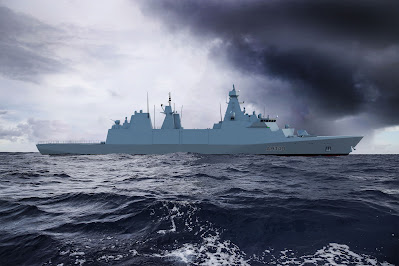There are two kinds of people in this world,those who think small calibre,rapid firing guns are more effective than large calibre guns and those who have studied ballistics; until the twentieth century guns were the dominant naval weapon but since the ascendance of mines,torpedoes,aircraft and missiles interest in naval gunnery has declined,leading to a lack of knowledge of ballistics in naval circles and herein we shall look at two examples of this.
A recent article by NAVYLOOKOUT claimed that the elderly .50 Browning Machine Gun cartridge "is one of the few rifle cartridges that can boast a ballistic coefficient of 1.0" (the undefined coefficient is G1),which is technically true as there are high ballistic coefficient bullets available for that cartridge but their increased length and weight reduces muzzle velocity resulting in inferior performance at typical combat ranges but superior performance in the extreme long range target shooting competitions for which they are designed,which is why most military projectiles have a far lower ballistic coefficient but higher muzzle velocity resulting in external ballistics inferior to those of the Three Eights Inch Machine Gun proposed herein,which shall also be lighter and faster firing than the Browning Machine Gun.
The Navy Matters blog recently published an article titled "Naval Gun Accuracy" which appears to be about precision rather than accuracy and which states "We have to be down around 0.1 deg or less deviation to hit our predicted intercept point close enough to be effective" but then goes on to say "my estimate is that deviations of 0.5-5 degrees are normal",an overestimate of between one and two orders of magnitude (the precision of modern small arms is well documented thanks to hundreds of millions of target shooters and the precision of modern artillery is being demonstrated every day in Ukraine),one manufacturer claims a probable error in azimuth of plus or minus ten metres at a range of twenty thousand metres and given that a modern 155mm shell generates a lethal area approaching the size of a football pitch that implies a high probability of a one shot kill against static infantry in the open and is consistent with the performance of naval gunfire in the Falklands War where "Such was the accuracy of NGS that specific targets could be accurately engaged, including a radar aerial that was ‘toppled from it's plinth’ by HMS Glasgow.....It was quite accurate. In some cases, it was too accurate. They had to employ a spreading fire to make it less accurate because it was all coming down in the same place.....it was gauged that during Operation Corporate, a barrage of twenty-five rounds of 4.5” NGS would be dispersed within an area that was smaller than a tennis court".
The article also claims that "if we fire enough shells toward the predicted intercept point, one or some of them will, statistically, wind up being close enough to be effective. This argues for smaller caliber projectiles that can be fired quickly and in large numbers." but a missile flying at twice the speed of sound moves over two hundred yards in the time it takes a 57mm Bofors Mark 3 gun to fire a single shot and thus the firing of each round is a discrete event and since a smaller calibre projectile has a lower sectional density for any given form factor it decelerates more quickly,takes longer to cover any distance and consequently suffers more drop due to gravity requiring a higher trajectory with a longer flight path and longer time of flight,allowing the target more time to manoeuvre away from the point of detonation,a problem exacerbated by the smaller effective radius of the smaller shell,resulting in a lower kill probability,thus the conclusion that "if we’re trying to shoot down an anti-ship missile, we need small, light, very rapid fire guns" is the very opposite of the truth.




No comments:
Post a Comment